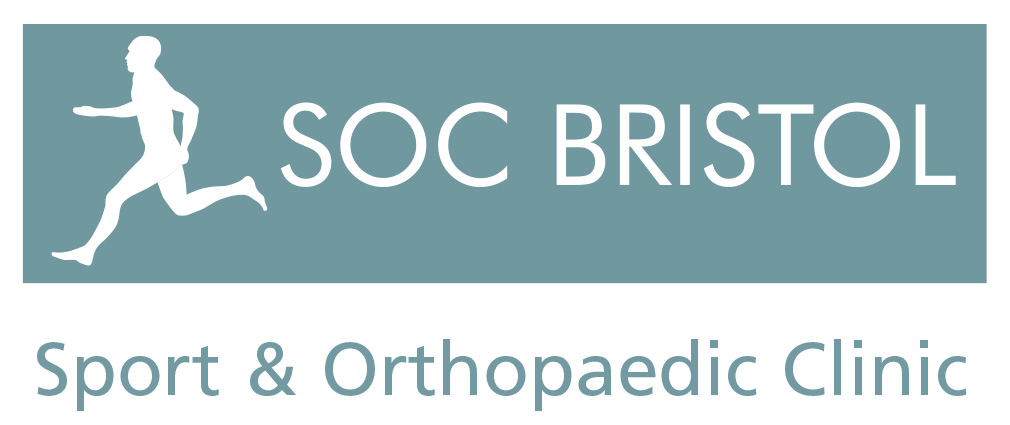Labral Anterior Posterior (SLAP) tear repair.
SLAP lesions usually occur following a fall on the arm or occasionally as a consequence of repetitive overhead activities such as an overhead throw or pitch. They may also follow a dislocation of the shoulder. It typically affects younger adults and is often a sporting injury.
Structures involved:
The relatively flat Glenoid (or bony shoulder socket) is surrounded by the labrum (a lip of fibrous tissue) that produces a shallow socket to stabilise the Humeral head (the ball of the ball and socket joint. The long Head Biceps (LHB) tendon enters the Gleno-Humeral (shoulder) joint at the front between two of the rotator cuff tendons, Subscapularis and Supraspinatus. The LHB tendon then passes through the joint to attach to the Supraglenoid Tubercle at the top of the Glenoid. It is possible to pull the superior labrum and the tendon off the bone in this region from the anterior (front) to the posterior (back).
The purpose of the surgery:
The aim of the surgery is to stabilise the superior Glenoid Labrum.
Alternative Treatment options:
The shoulder may be treated symptomatically with rehabilitation, analgesics and anti-inflammatories. Activities can be modified to avoid those causing pain or symptoms.
Anaesthetic:
The surgery is typically undertaken with the patient asleep with a nerve block to provide additional pain relief.
Incision and Dressings:
SLAP repairs are typically undertaken as arthroscopic (keyhole) procedure and are usually carried out through two or three small (5mm) incisions. These incisions are closed either with paper Butterfly sutures (SteriStripsTM). Dissolvable sutures may be used but do not need to be removed. The wounds are then covered with a splash-proof OpsiteTM dressing. These dressings may in turn be covered by a large padded dressing immediately following the operation. This padded dressing is removed prior to being discharged home.
Procedure:
The damaged edge of the Glenoid (socket) under the superior labrum is prepared to encourage healing. The labrum is then reattached to the Glenoid using sutures (stitches) attached to small anchors drilled into the bone of the Glenoid. Loose damaged tissue that cannot be repaired is trimmed or debrided.
Please select the following link to view the .wmv file version if you do not wish to install QuickTime:
SLAP Pushlock _PowerPoint
Rehabilitation:
Following the surgery immobilisation is required in a PolyslingTM. The sling should be worn as instructed in the post-operative guidance. The sling is usually worn for three to six weeks day and night. The arm should be exercised as detailed in the post-operative rehabilitation guidelines. This typically involves avoiding movements that stress the repair too soon.
Please see the SLAP repair rehabilitation guidelines.
Admission and Discharge:
You will normally be admitted the day of surgery and go home the same day. It may be necessary for you to stay in overnight particularly if you do not have a responsible adult to keep an eye on you overnight or if your operation is late on in the day.
Outcome:
The majority of patients experience improved pain and strength in the shoulder following surgical repair of a SLAP. Full recovery may take at least months 6 months.
Risks associated with the operation:
All operations are associated with a degree of risk but significant complications associated with an arthroscopic SLAP repair are uncommon. The following risks are those which are serious or most commonly reported in the literature.
Infection (<1%). Infection in shoulder surgery is uncommon, particularly in keyhole (arthroscopic) surgery. If an infection were to develop it is typically a superficial infection, which can be treated with oral antibiotics. Rarely does an infection develop that requires re-admission to hospital and surgery to wash the infection out.
Pain (1%). Pain is typically relieved by the surgery but may take three to six months to settle. It is uncommon for pain to continue following surgery. It is possible but very unlikely that the pain will feel worse following the surgery (<1%).
Anaesthetic Risks (Anaestheic complications are rare but include Heart Attack (Myocardial Infarction, MI), Stroke (Cerbero-Vascular Accident, CVA) and a clot in the leg (Deep Vein Thrombosis, DVT) or lungs (Pulmonary Embolus, PE).
Damage to nerve or blood vessels (Neuro-Vascular Damage) (<1%). Damage to nerves or blood vessels are rare. Damage to the axillary nerve may occur as it passes close to the joint. Damage to this nerve may result in weakness and difficulty bringing the arm out to the side (abduction).
Stiffness. After the surgery and a period of immobilisation the shoulder is likely to be stiff. This stiffness should improve with time and graduated rehabilitation. Initial stiffness may be protective of the repair. Rarely persistent stiffness or a frozen shoulder (Intrinsic Capsular Stiffness) develops and may require treatment.
Recurrence. The aim of the surgery is to stabilise the shoulder (Gleno-Humeral) Joint. Despite a successful repair or reconstruction there is a small risk of recurrent instability or a re-tear. Typically this follows a further injury.
Further surgery (Re-operation).
Arthritis. While the surgery itself is unlikely to significantly predispose the shoulder to arthritis, instability of or injury to Gleno-Humeral joint may increase the probability of arthritis.

